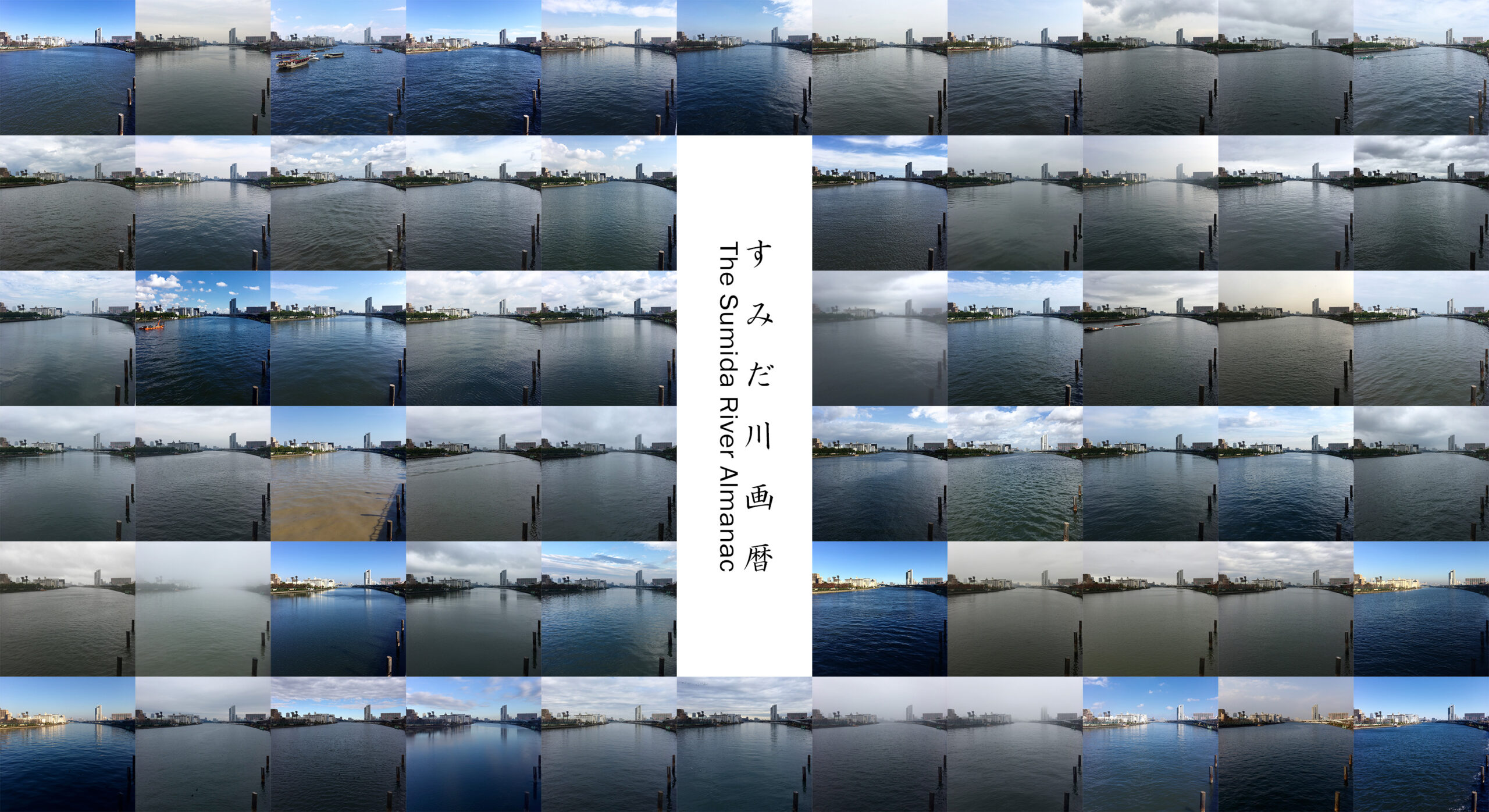
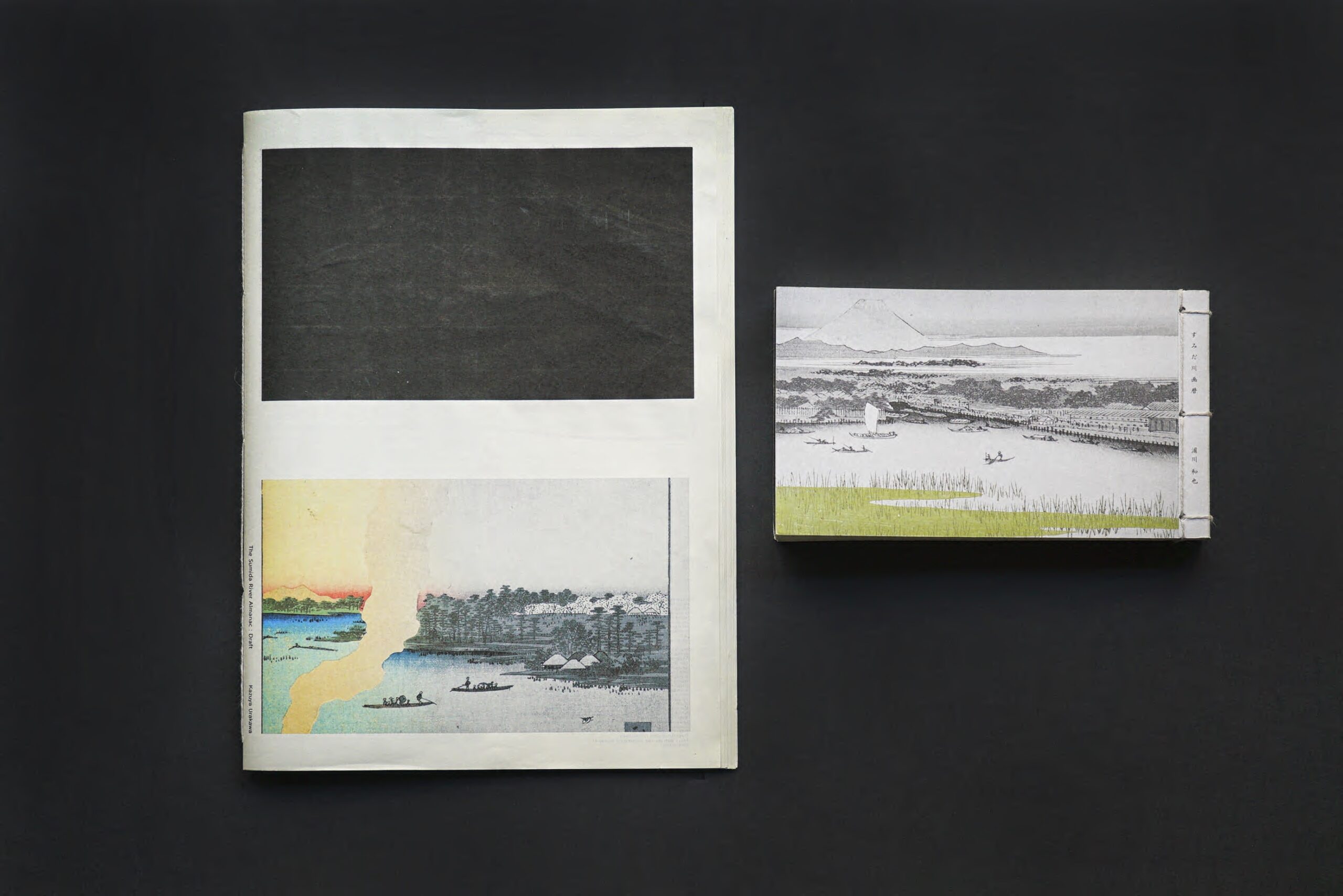
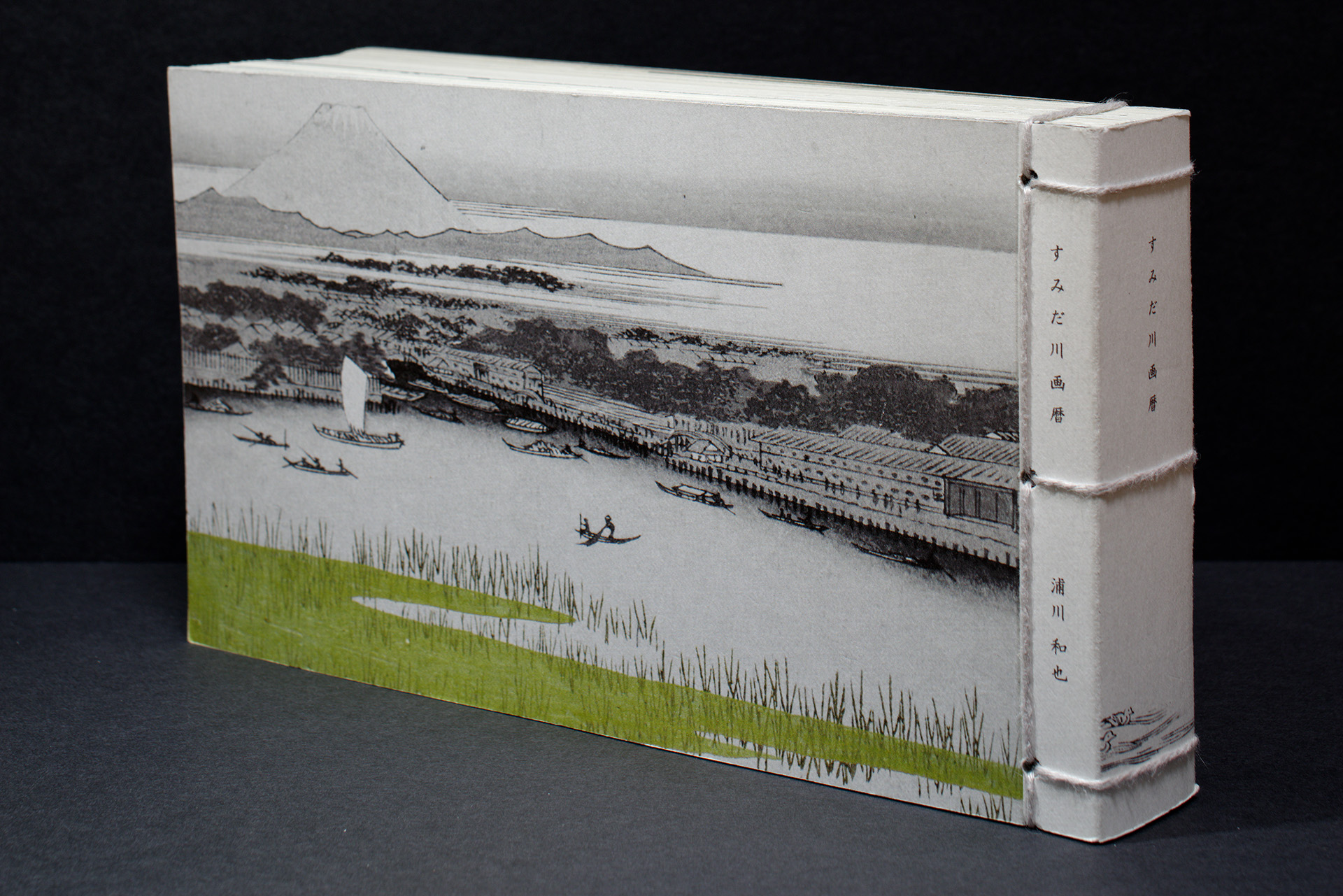

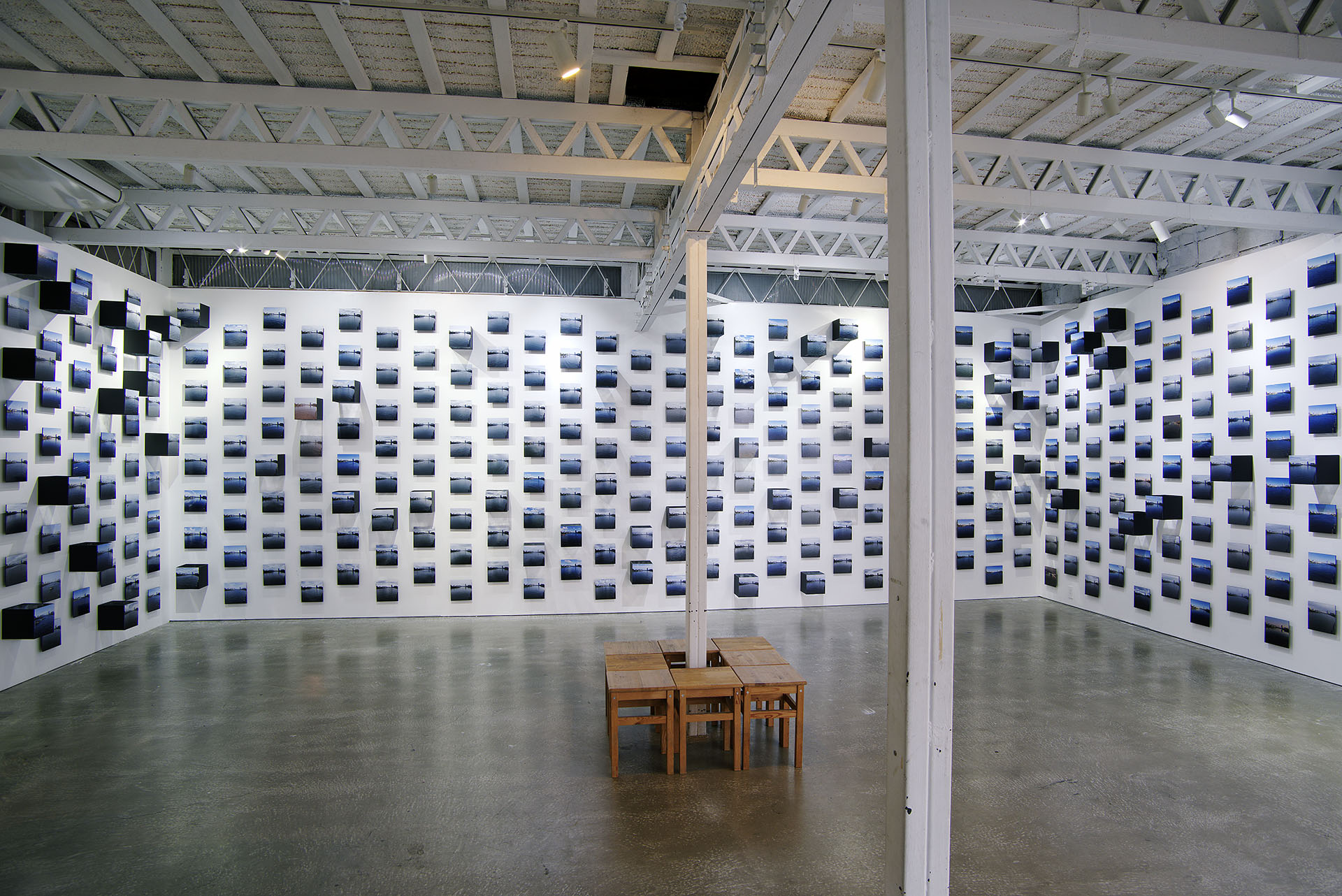
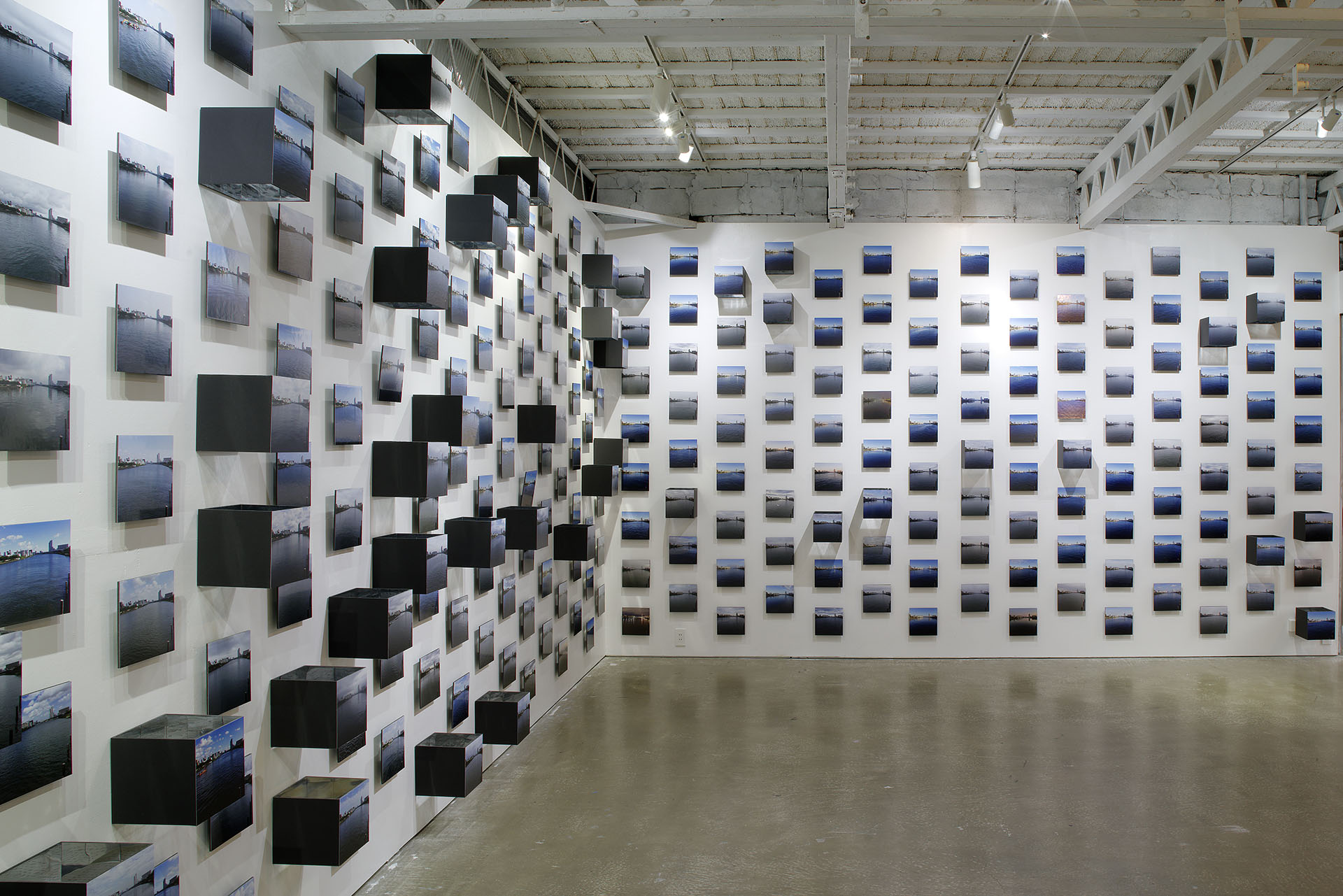
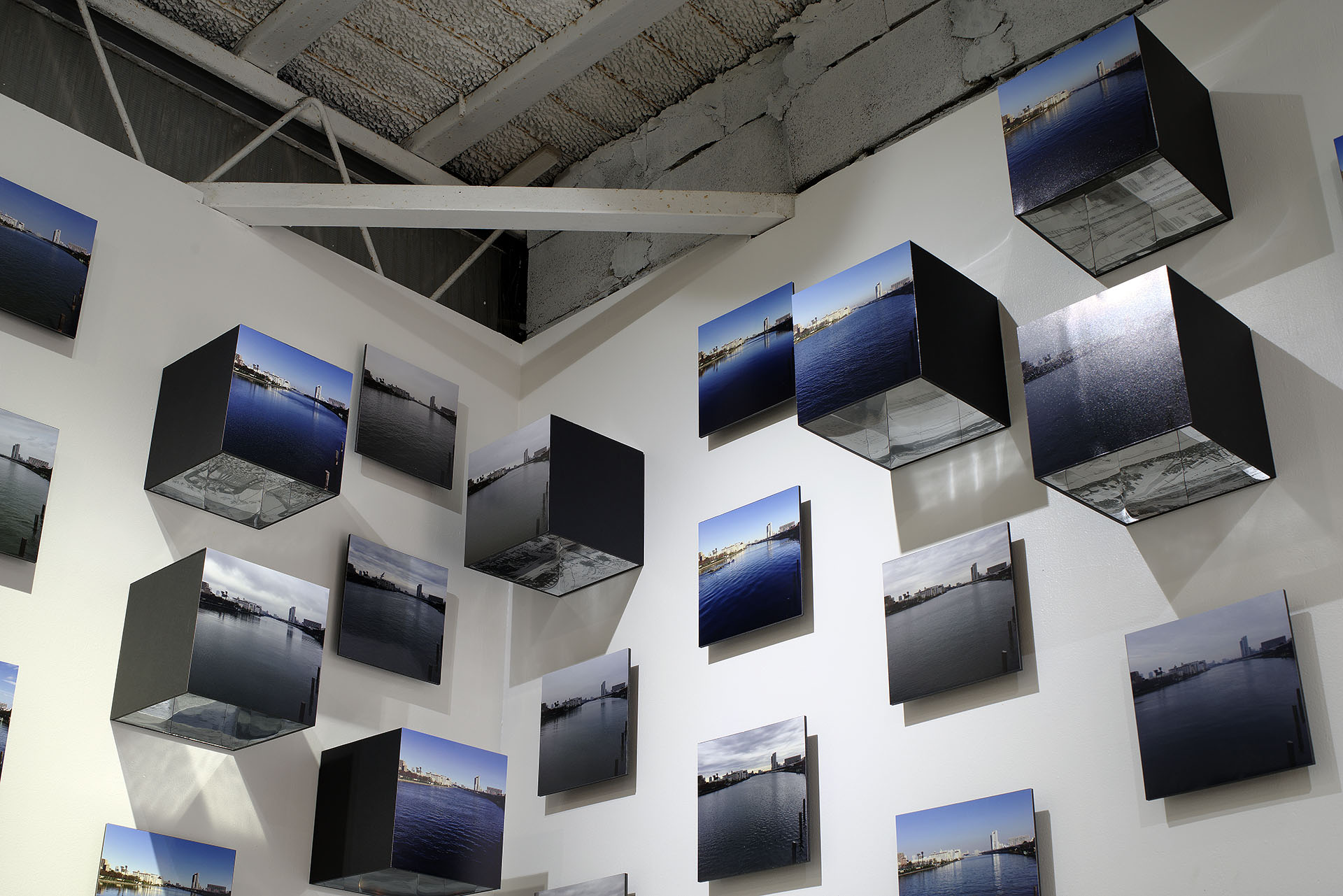
本作について
私は二〇一二年頃から隅田川の定点観測を続けてきました。天候や潮の干満等によって水面の表情はいつも異なり、川沿いの木々は季節に応じて多様な表情を見せます。さらに行き交う船や構造物の変化、すなわち人の営みが加わることによって川の眺望は一瞬として同じことがありません。しかしこのような微小な変化に対して、私たちの視覚と意識は意外と鈍感です。
ある日、定点観測を続けながら隅田川について調査を進める中で、歌川広重が描いた三枚組の浮世絵に出会いました。広重が描いた隅田川は現代の眺望とは似ても似つかないものでしたが、その川の線形から正に当時私が定点観測で向き合っていた場所であるように感じ、この一致を浮世絵の中に示された地名や社寺の名称から確認することができました。そして毎日の定点観測に観る微細な変化と約二〇〇年前に描かれた浮世絵との対比から、美術史家ジョージ・クブラーが提唱した「系統年代」を思い出し、隅田川の歴史を遡りはじめたのです。
クブラーの提唱した「系統年代」とは、私たちが日常の中で使用する時間軸である「絶対年代(absolute age)」と対立する時間性の概念です。彼は、あらゆる事物は各々異なる時間軸である「系統年代(systematic age)」を持っていて、その系統年代に起因する特徴を持つとともに、事物の置かれた時代がもたらす特徴や外観としてのまとまりをも持った複合体になると述べ、絶対年代による等質的な歴史観では捉え難い時間の複数性や非同期性に注目しました。都市は言うまでもなく様々な系統年代を持つ事物の複合体であり、その時間性は系統年代の複合として表れるのです。
東京は約四〇〇年という短期間で世界有数の大都市に変貌を遂げましたが、ヨーロッパの諸都市と比べると歴史的記憶に乏しく現在でも相当な速度で変化し続けています。江戸時代以降、改変の歴史を繰り返しながら首都を代表する川であり続けてきた隅田川は、江戸・東京のドラスティックな変化を見てきた生き証人と言えるでしょう。二〇〇年前とは全く変わってしまった眺望と二〇〇年前から変わらず残る線形の対比、一年の中に見える微細な変化、そして隅田川にまつわる様々なエピソード、これらをひとつのオブジェクトに圧縮した本プロジェクトは、東京の生き証人である隅田川の系統年代を浮き彫りにするのです。
STATEMENT
I have kept on a fixed-point observation of the Sumida River from since around 2012. The surface of the water always looks different depending on the weather or the ebb and flow, and the trees along the river show a variety of expressions through all seasons. In addition, the river view never looks the same from one moment to the others in changes of the boats that pass by the water, the architectures on the riverbank, in other words, human activities. However, we are surprisingly insensitive in terms of the visual attention and perception, to such subtle changes.
In the course of my research, conducted in parallel with the fixed-point observation of the Sumida River, I encountered a set of three Ukiyo-e prints by Hiroshige Utagawa. Hiroshige’s depiction of the river did not resemble its view of today, but I came to realize that the course of the river depicted in those prints looked exactly like the point I had been facing at that time. Luckily, I was able to confirm this coincidence from the nearby toponyms, shrines, and temples shown in the Ukiyo-e. The contrast between the subtle changes I found in my daily observations and the Ukiyo-e drawn 178 years ago reminded me of the “Systematic age” proposed by art historian George Kubler, which was the beginning of my tracing of the history of the Sumida River.
“Systematic age” is a standard of duration that is opposed to “Absolute age,” the time axis we use in our daily lives, according to Kubler. He explains that all things have a unique time axis of Systematic age. They have characteristics attributed to their Systematic age, and are recognized as a complex entity with the characteristics and appearance of the time in which they existed. He argues that time has characteristics such as plurality and asynchrony, which you may not be able to fully explain by a conventional, standardized historical perspective based on Absolute age. The same applies to a city. A city is a complex entity enfolding various Systematic ages, and based on Kubler’s theory, you recognize its history as a compound of Systematic ages.
Tokyo has transformed itself into one of the world’s largest cities in a short period of about 400 years, yet the city, lacking its historical memories, has still been changing at a considerable speed. The Sumida River, one of the most important and iconic features of the capital city, has been witnessing a drastic historical transformation of where once called Edo, then Tokyo now. In this project, I compressed the elements such as the contrast between the complete transformation (views over the riverbank) and the unchangingness (the course of its flow) over the last 200 years, the subtle changes I saw in over the seasons, and the various episodes about the river, into one object. In doing so, I tried bringing Systematic age of the Sumida River to light, to recognize it as a living witness of Tokyo.